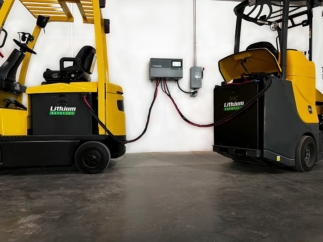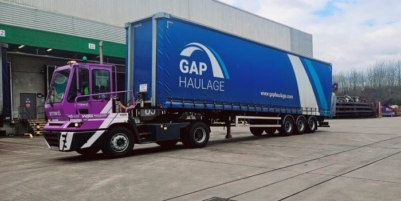-
Nutrivend selects Forterro’s Orderwise to support online expansion and streamline operations - April 11, 2025
-
ARROWXL LAUNCHES AMBITIOUS ZERO WASTE ROADMAP - April 8, 2025
-
THE BCMPA’S NEW CAMPAIGN DRIVES OUTSOURCING SUCCESS IN Q1 - April 7, 2025
-
BLACKOUT TECHNOLOGIES TARGETS TELEMATICS-INTEGRATED MOBILE DEVICE BLOCKING TO COMBAT SMARTPHONE DISTRACTION - April 1, 2025
-
OpenADR Alliance announces first OpenADR 3.0 certified products with EVoke Systems, E.ON Energy and Universal Devices - March 25, 2025
-
Growing fulfilment and contract packer appoints new Managing Director - March 25, 2025
-
When is it time to invest in a WMS? Understanding the key trigger points - March 25, 2025
-
eCapital helps Vantage Recruitment on its journey to financial success - March 24, 2025
-
Hugo Beck Celebrates 70 Years of Packaging Innovation with Open House Events - March 20, 2025
-
PROLOG FULFILMENT SUPPORTS LUNA DAILY’S COMMITMENT TO BETTER BODY CARE FOR ALL WOMEN - March 19, 2025
Overview
Although opportunity charging is not new in this market, lithium improves upon the existing concept; it brings is a true fast opportunity charge because Lithium can truly be charged in a one-hour timeframe. Allowing the operator the freedom to just plug the battery in during a lunch or break and a short break is really can bring 25 percent back to the battery or more being on the brake. Lithium enables a 24/7 operation without having to do battery swaps. Also, there’s no degradation with overcharging or undercharging because the lithium batteries are protected by the battery management system. They’re able to be continuously plugged in during off periods. The operator doesn’t have to worry about the state of charge, and it is kept at an optimal state of charge. There’s no worry about having an overcharge battery, allowing for disruption of routines.
Opportunity charging is a practice applicable to both Lead Acid and Lithium-ion (Li-ion) batteries for motive power systems and especially useful for Material Handling (MH) equipment. Fast charging is a key differentiator for Lithium-ion batteries. Because the chemistry allows fast charging without damaging cycle life, batteries can be charged opportunistically during breaks and don’t require battery swaps.
Charging Li-ion Batteries
Li-ion batteries are preferably charged using a Constant Current / Constant Voltage (CC/CV) charge regime, but most MH equipment batteries are designed to accept both CC/CV and FLA charge regimens. Regardless of the state-of-charge of the battery when connected to the charger, the battery will efficiently accept the power and increase its state-of-charge. Whether the battery has been connected to the charger for 15 minutes or two hours, that battery can be immediately discharged and used by the MH equipment as there is no need to cool or rest a Li-ion battery after charging. The Li-ion cell chemistry has numerous chemical variants. Lithium Iron Phosphate (LFP) chemistry is the predominant chemistry used to power MH equipment: LFP features:
• exceptionally long cycle life (2000 – 4000 cycles to reach 80% of the original capacity)
• high power capabilities for both charge and discharge
• lower energy/density than other Li-ion variants.
The long cycle life means an LFP battery can be installed and remain in the equipment for 8-10 years. More importantly, since LFP chemistry can accommodate high power delivered to and from the battery, a depleted LFP battery can accept a full charge in a little over one hour (i.e. 1 C rate) and it can be delivered throughout the shift when the operator has a break or lunch. Li-ion is the optimal chemistry for opportunity charging.
Considerations & Best Practices for Opportunity Charging
1. Do a power study where the battery activity is monitored. Based on the data, one can determine whether there are adequate opportunities for charging throughout the shift. If there is no down-time for the equipment throughout the shift, then the batteries will need to be charged for an hour before the shift.
2. Single shift vs. multi-shift operations can determine the value of opportunity charging. If the enterprise operates a single shift operation, a fully charged Li-ion (or FLA) battery should power that vehicle through the shift. When a second (or third) shift is needed, then opportunity charging can be used to recharge in increments and ensure that the equipment is powered through all the shifts.
3. Rather than charging FLA batteries in a centralized battery maintenance room, distributed the Li-ion charging stations near break rooms and heavy work areas. Decentralized charging stations eliminate the operator’s travel time from their work area to battery maintenance room as well.
4. Assess existing FLA chargers to determine if they are compatible with the Li-ion batteries.
5. Assess the power output of the existing FLA and Li-ion charging infrastructure. The power rating on the charger must be much higher when opportunity charging.
6. Consider a multi-voltage battery if opportunity charging is desired but there is not adequate down-time within a shift.

































